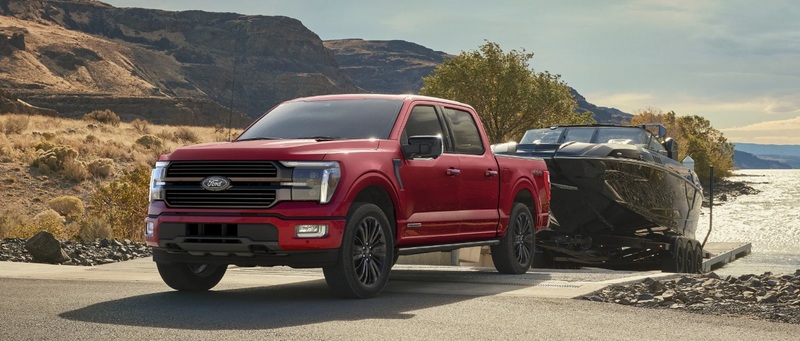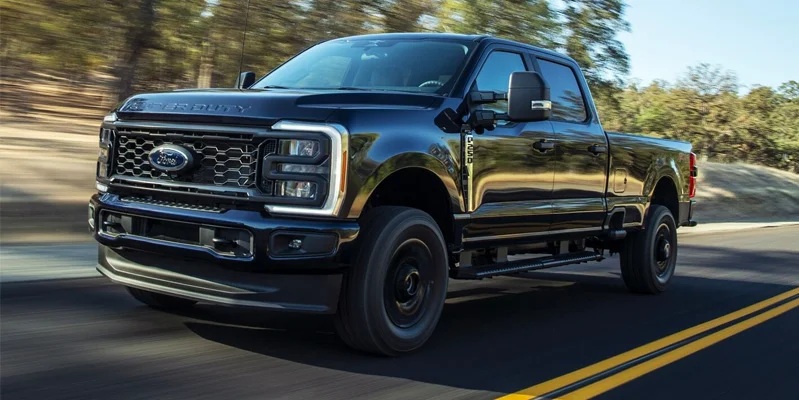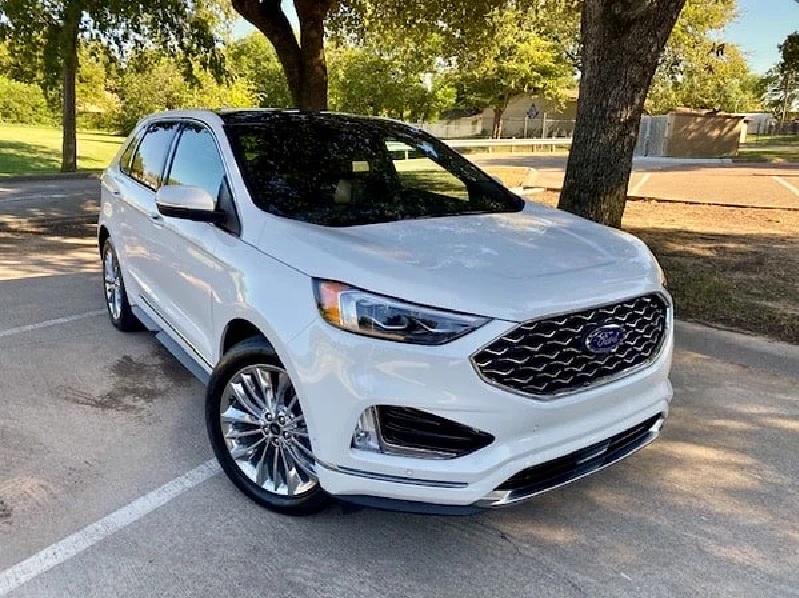Ford F-150 vs 250 vs 350: Which Heavy-Duty Pickup Is Best?
The Ford F-Series has maintained its position as the best-selling truck lineup for decades, offering a range of models to suit virtually any need. Understanding the key differences between the F-150, F-250, and F-350 is essential for selecting the right truck for specific requirements. While these vehicles share a family resemblance and brand heritage, they […]
The Ford F-Series has maintained its position as the best-selling truck lineup for decades, offering a range of models to suit virtually any need. Understanding the key differences between the F-150, F-250, and F-350 is essential for selecting the right truck for specific requirements. While these vehicles share a family resemblance and brand heritage, they represent distinctly different capability classes designed for increasingly demanding applications.
Classification Differences
The fundamental distinction between these models lies in their weight classifications:
- F-150: Classified as a light-duty (Class 2) truck with a Gross Vehicle Weight Rating (GVWR) ranging from approximately 2,948 kg to 3,856 kg.
- F-250: Enters the heavy-duty (Class 3) category with a GVWR between 3,856 kg and 4,536 kg.
- F-350: Remains in the heavy-duty segment but extends into Class 4 territory with GVWR options ranging from 4,536 kg to 6,350 kg, depending on configuration.
These classifications directly influence the trucks’ designs, component specifications, and ultimate capabilities.
Structural Engineering
Significant structural differences separate these models, becoming more substantial as you move up the lineup:
F-150
The F-150 utilizes a high-strength, military-grade aluminum alloy body paired with a fully boxed high-strength steel frame. This construction prioritizes a balance between capability and efficiency, with the aluminum body saving approximately 317 kg compared to traditional steel construction.

F-250 and F-350
Both Super Duty models feature significantly reinforced frames with up to 10 crossmembers, increased steel gauge thickness, and additional gusseting for enhanced rigidity. While they maintain aluminum body panels for the cab and bed, these components are thicker and more robust than those found on the F-150.
The F-350 further differentiates itself with available dual rear wheels (DRW), providing a wider rear stance for increased stability when carrying heavy loads or towing.

Powertrain Options
Engine offerings become progressively more powerful throughout the lineup:
F-150
- 3.3L V6: 216 kW, 359 Nm
- 2.7L EcoBoost V6: 242 kW, 542 Nm
- 3.5L EcoBoost V6: 298 kW, 678 Nm
- 5.0L V8: 298 kW, 556 Nm
- 3.5L PowerBoost Hybrid: 321 kW, 773 Nm
- 3.5L High-Output EcoBoost (Raptor): 336 kW, 691 Nm
F-250
- 6.8L V8 Gas: 302 kW, 590 Nm
- 7.3L V8 Gas “Godzilla”: 321 kW, 644 Nm
- 6.7L Power Stroke V8 Diesel: 354 kW, 1,423 Nm
F-350
- Same engine options as F-250, but with specialized calibrations to handle the increased load capacity
Transmission options include 10-speed automatics for the F-150, while Super Duty models feature heavy-duty 10-speed TorqShift automatics specifically engineered for commercial applications.
Capability Metrics
Towing and payload capacities increase substantially across the lineup:
F-150
- Maximum Conventional Towing: Up to 6,350 kg (with Max Trailer Tow Package)
- Maximum Payload: Up to 1,508 kg
F-250
- Maximum Conventional Towing: Up to 9,072 kg
- Maximum Gooseneck/Fifth-Wheel Towing: Up to 10,886 kg
- Maximum Payload: Up to 2,178 kg
F-350 (SRW)
- Maximum Conventional Towing: Up to 10,433 kg
- Maximum Gooseneck/Fifth-Wheel Towing: Up to 12,701 kg
- Maximum Payload: Up to 3,216 kg
F-350 (DRW)
- Maximum Conventional Towing: Up to 10,433 kg
- Maximum Gooseneck/Fifth-Wheel Towing: Up to 16,783 kg
- Maximum Payload: Up to 3,561 kg
Suspension Systems
Suspension designs differ significantly to accommodate the increasing capability requirements:
F-150
Features an independent front suspension with coil-on-shock setup and a solid rear axle with leaf springs. This configuration prioritizes ride comfort while maintaining respectable capability.
F-250
Utilizes a solid front axle with twin coil monobeam design and heavy-duty leaf springs in the rear, providing enhanced durability for heavier loads at some expense to ride quality.
F-350
Shares the F-250 basic suspension architecture but with upgraded components, including stronger springs and additional leaf springs in DRW models. The available rear air suspension provides load-levelling capability.
Dimensional Differences
Physical dimensions increase progressively across the lineup:
- Track Width: F-350 DRW models are approximately 30 cm wider at the rear than F-150 models
- Height: F-250/F-350 stand about 7.6-10.2 cm taller than comparable F-150 models
- Ground Clearance: Increases from approximately 23.6 cm on the F-150 to 25.4 cm on Super Duty models
- Wheelbase Options: All three offer multiple wheelbase options, with Super Duty models offering longer configurations
Technology Integration
While all three models offer advanced technology features, implementation differs based on intended use:
- The F-150 emphasizes productivity and convenience features like Pro Power Onboard (available 2.4 kW or 7.2 kW mobile generator) and work-specific smart features
- Super Duty models focus on capability-enhancing technologies like trailer reverse guidance, trailer brake controllers, and specialized towing assistance systems
Top 5 Best Features
- Class-Exclusive Pro Power Onboard System – The F-150 available 7.2 kW generator system transforms the truck into a mobile power station, powering everything from job site tools to campsite amenities with multiple 120V outlets.
- High-Definition Trailer Tow Camera System – Available across all models, this system offers up to seven camera views for enhanced visibility when maneuvering with trailers, including 360-degree surround view and specialized trailer guidance lines.
- Adaptive Steering System – Available on higher trims across the lineup, this system automatically adjusts steering ratio based on vehicle speed, providing precise low-speed maneuverability and steady highway control.
- Tremor Off-Road Package – Available on all three models, this comprehensive off-road package includes specialized suspension, aggressive tires, skid plates, and unique terrain management systems tailored to each truck’s capabilities.
- 6.7L Power Stroke Diesel Engine – Available in F-250 and F-350 models, this powerhouse generates 354 kW and 1,423 Nm of torque, enabling the extraordinary towing and hauling capabilities of the Super Duty lineup.
5 Facts About Ford F-Series Trucks
- The combined maximum towing capacity of the F-350 DRW (16,783 kg) is equivalent to the weight of approximately 11 standard passenger cars.
- The aluminum body of the F-150 represents the largest-scale industrial use of aluminum in the automotive industry, requiring Ford to develop entirely new assembly and repair procedures.
- The 7.3L “Godzilla” V8 in the Super Duty trucks is the largest displacement gasoline engine currently offered in any consumer pickup truck in North America.
- During development testing, Ford F-Series trucks undergo the equivalent of 250,000 km of severe duty service, including pulling maximum loads up 12% grades in temperatures exceeding 45°C.
- The Super Duty’s frame uses up to 95% high-strength steel, with some sections up to 3.6 mm thick—nearly twice the thickness of standard truck frames.
Questions and Answers
What is the main difference between the F-150, F-250, and F-350?
- The primary differences are in their capability ratings and intended use cases. The F-150 is a light-duty truck designed for everyday use with moderate hauling and towing needs. The F-250 and F-350 are heavy-duty trucks engineered for more demanding commercial and recreational applications, with substantially higher towing and payload capacities, reinforced components, and specialized powertrains.
Can the F-150 tow as much as an F-250 or F-350?
- No, the maximum towing capacity (about 6,350 kg) is significantly lower than the F-250 (up to 10,886 kg) or F-350 (up to 16,783 kg). The Super Duty models feature stronger frames, enhanced cooling systems, more powerful engines, and specialized towing equipment designed specifically for heavier loads.
What are the fuel economy differences between these trucks?
- While official fuel economy ratings vary by specific configuration, generally the F-150 offers better fuel efficiency due to its lighter weight, smaller engine options, and focus on efficiency. The F-250 and F-350 prioritize capability over efficiency, resulting in higher fuel consumption, though the diesel options can provide reasonable efficiency when considering the capability they offer.
Are there significant differences in ride quality between these models?
- Yes, the F-150 typically offers the most refined ride quality due to its independent front suspension and lighter-duty components, which are designed for daily driving comfort. The F-250 and F-350 feature stiffer suspensions with solid front axles, optimized for load-carrying, resulting in a firmer ride, particularly when unladen.
Can I use an F-150 for commercial work instead of an F-250 or F-350?
- The F-150 can handle many light commercial applications, but for regular heavy loading, frequent towing of substantial trailers, or demanding job site conditions, the Super Duty models are more appropriate. Consistently operating at or near maximum capacity can accelerate wear on lighter-duty components.
What is the difference between F-350 SRW and DRW models?
- Single Rear Wheel (SRW) models feature two rear wheels, similar in appearance to those of the F-250. Dual Rear Wheel (DRW) or “dually” models feature four rear wheels (two on each side), providing a wider and more stable platform for hauling heavy payloads or towing large trailers, particularly fifth-wheel or gooseneck configurations.
Are maintenance costs similar between these three truck models?
- Maintenance costs typically increase as you move up the lineup. The F-250 and F-350 have larger components that often cost more to replace, require more fluids (larger engines, transmissions, and differentials), and may need more frequent service when used for their intended heavy-duty applications. The diesel engine option also has specific maintenance requirements that differ from gasoline engines.
Can all three models use the same accessories and parts?
- Many accessories are model-specific due to dimensional and structural differences. While some cabin accessories might be interchangeable, most external components, suspension parts, drivetrain components, and model-specific features are not compatible across the lineup.
Do all three trucks offer the same trim levels and luxury features?
- All three offer similar trim progression from basic work trucks to luxury models, but specific feature availability may differ. The F-150 often receives new comfort and technology features first, while the Super Duty models emphasize work-oriented features. However, top-tier trims, such as Limited, King Ranch, and Platinum, are available across all models, offering comparable luxury amenities.
Which model is best for off-road use?
- Each model offers dedicated off-road packages. The F-150 Raptor is engineered specifically for high-speed desert running, featuring a specialized suspension and drivetrain. The Tremor packages available for all three models focus on traditional off-road capability with increased ground clearance, enhanced approach/departure angles, and specialized traction systems. The Super Duty Tremor models emphasize off-road capability while maintaining heavy-duty towing and hauling capacity.


